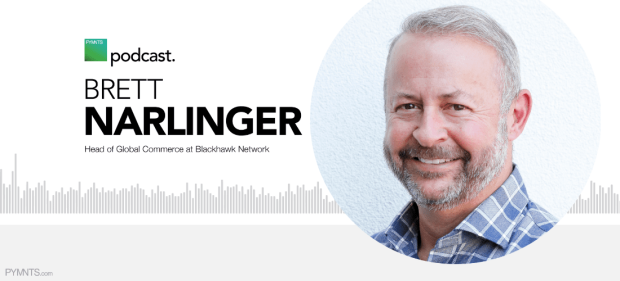Making Cash Relevant In The Era Of Digital Payments

People love to predict traditional money’s imminent demise. Countless think pieces have been written about how cash is on its last legs, but somehow it keeps sticking around.
Brett Narlinger, head of global commerce at branded payments provider Blackhawk Network, said some of that stems from consumers who lack banking system access and find cash the easiest way to handle transactions. But he told Karen Webster recently that others — particularly some younger consumers — use cash because they want to and are looking for wider ways to do so.
“Certainly one of the trends that I’ve been watching for years is this next generation coming up who are increasingly making a decision that they are not going to bank the way they traditionally have,” he said. “They prefer to utilize cash but still want to have access to the digital highway. The big decision they are making as a cash consumer is: ‘What are they going to do so their cash can be plugged into their phones, computer and apps?’”
Narlinger added that even though the World Health Organization has advised consumers to stay away from cash due to COVID-19, that’s not going to kill cash any more than the last 15 things forecast to kill it did. Consumers who like cash will want to use it more — not less — in the face of the economic uncertainty that has come along with the pandemic, he said.
Instead, the challenge is to use all the capabilities already built to create a cash onramp to digital interactions.
“The natural progression of payments is to be able to utilize the device that those consumers are comfortable with to carry out their everyday spend,” Narlinger said. “Then the job is just creating technology [to] be enabled to do that and connect the dots. And that’s what Blackhawk is doing — connecting those dots.”
Turning Physical Cash Into Virtual Money
Narlinger brought up the example of the cash-based digital gamer who wants to add funds to his or her Xbox or PlayStation account but can’t since there’s no way to shove cash into a gaming console. That gamer needs an easy means to turn money into digitized cash.
Narlinger said he wants that to be as easy as heading to a grocery store, scanning a QR code or barcode and handing over cash to turn into digital funds to pay for something. He said Blackhawk aims to make that happen for things like gaming by using things like a PIN code that a grocery store would print on your receipt.
“So, I make my purchase with cash, a PIN shows up on my receipt, and then I utilize that PIN to put the cash I added onto my mobile phone, my device or my game,” he said. “I [turn] that cash into a digital transaction.”
He said he believes many merchants would like to become such “cash-in” locations, accepting cash from consumers and turning it into digital funds. Narlinger noted that adding barcode and QR code scanning isn’t a complicated technological integration or a requirement that stores do something radically new.
Moreover, the rise of non-banks makes consumers increasingly familiar with the concept of seeking financial services at non-bank locations. They’re getting used to the idea of walking into a retailer and doing things they would have previously done at traditional banks.
Narlinger added that grocery stores and other essential retailers are currently a perfect test case, as they’re often the only places where consumers are shopping these days.
“We believe that retailers large and small can benefit from being able to be that point of banking to these alternative channels that are becoming much, much stronger right now,” he said. “Customers don’t want to go to 10 places in a day and potentially expose themselves more than they have to. They know they have to go to the grocery store, and they are starting to ask why they shouldn’t be able to do everything they have to in one stop.”
Transacting via barcode scanning at the point of sale (POS) will not only make it easier for customers to digitize their cash, but will also allow them to scan codes and then pay via alternative means like Venmo accounts, Narlinger said.
He said that among younger consumers, Venmo is far more familiar than a card payment. Narlinger said many young people already make three or four Venmo payments every day, so it feels like a more natural way for them to pay for things.
By tapping into barcode technology that already exists, Blackhawk can enable people to pay using P2P accounts at the POS without creating a new thing that merchants have to learn to use.
“So, my son wants to go shop with his Venmo account and all he has to do is go to the point of sale, and then there’s a transaction that occurs between the point of sale and his phone that creates a barcode for $112 or whatever he is spending,” Narlinger said. “He can scan that, and it takes the money directly out of his Venmo account without having to take any extra hops.”
The Pandemic Is Changing The Landscape
Such frictionless payments are increasingly what a lot of consumers want, and merchants who desire to hold onto those customers need to adapt to that, he said.
“We’re seeing some pretty steep increases in consumers changing their behavior toward mobile and digital, and I think it’s going to go even further over the next few years,” Narlinger said. “This pandemic is shifting multiple generations, and there are folks who are doing things they never thought they would be doing; now we’re seeing old habits broken and being completely realigned.”
